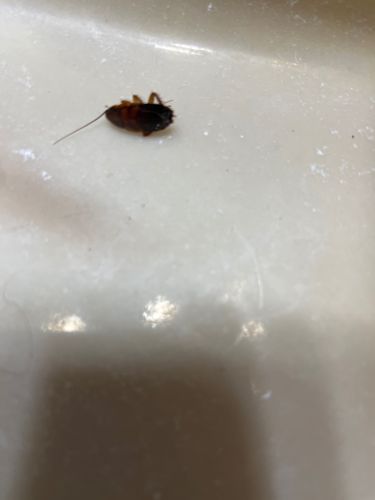German Cockroach
Scientific Name: Blattella germanica
Order & Family: Order: Blattodea, Family: Ectobiidae
Size: Typically 1.1 to 1.6 cm (0.43 to 0.63 inches) long.

Natural Habitat
Primarily indoor pests, found in warm, humid environments close to food and water sources. Common habitats include kitchens, bathrooms, basements, and any areas with plumbing or food preparation.
Diet & Feeding
Omnivorous scavengers; they will eat almost anything, including food scraps, grease, pet food, soap, glue, and even other cockroaches. They are particularly attracted to starches, sugars, and fatty foods.
Behavior Patterns
Nocturnal; they hide in cracks and crevices during the day and come out at night to forage for food. They are fast runners and can be difficult to catch. They reproduce rapidly, with females laying multiple egg cases (oothecae) throughout their lifespan.
Risks & Benefits
Risks: Known to carry and transmit pathogens such as bacteria (e.g., Salmonella, E. coli) that can cause food poisoning and other diseases. Their droppings and shed skins can trigger allergies and asthma attacks, especially in children. They can also contaminate food and surfaces. Benefits: Virtually none for human environments; they are considered a significant pest.
Identified on: 9/3/2025